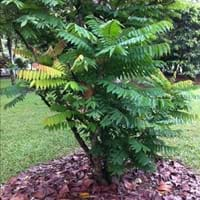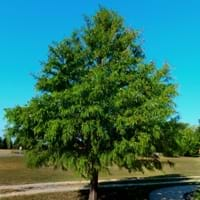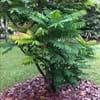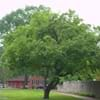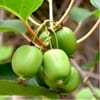Life Span
Perennial
Perennial
Type
Flowering Plants, Herbs
Tree
Origin
Hybrid origin
Northeastern United States, Mid-Atlantic United States, Southeastern United States, North-Central United States, Central United States, South-Central United States
Types
Not Available
Bald cypress is a cypress type
Number of Varieties
Not Available
Habitat
moist forests, Mountains
Humid climates, Warmer regions
USDA Hardiness Zone
4-9
4-11
Sunset Zone
1a, 1b, 2a, 2b, 3a, 3b, 4, 5, 6, 7, 8, 9, 10, 11, 12, 13, 14, 15, 16, 17, 18, 19, 20
2a, 2b, 3a, 3b, 4, 5, 6, 7, 8, 9, 10, 12, 13, 14, 15, 16, 17, 18, 19, 20, 21, 22, 23, 24
Habit
Clump-Forming
Pyramidal
Flower Color
Purple, Pink, Lavender
Green, Bronze, Brown
Flower Color Modifier
Bicolor
Bicolor
Fruit Color
Brown
Green, Brown
Leaf Color in Spring
Green
Green, Lime Green
Leaf Color in Summer
Green
Green
Leaf Color in Fall
Green
Copper, Bronze
Leaf Color in Winter
Green
Not Available
Leaf Shape
Pinnate
Linear
Plant Season
Spring, Summer
Spring, Summer, Fall, Winter
Sunlight
Full Sun
Full Sun, Partial Sun, Partial shade
Type of Soil
Clay, Loam, Sand
Clay, Loam, Sand
The pH of Soil
Acidic, Neutral, Alkaline
Acidic, Neutral, Alkaline
Soil Drainage
Well drained
Average
Bloom Time
Late Spring, Summer
Spring
Tolerances
Drought, Salt
Wet Site, Pollution, Soil Compaction
Where to Plant?
Ground
Ground
How to Plant?
Cuttings, Seedlings
Seedlings
Plant Maintenance
Medium
Medium
Watering Requirements
Needs very little water
Keep plant submerged in water
In Summer
Lots of watering
Lots of watering
In Spring
Moderate
Moderate
In Winter
Average Water
Average Water
Soil pH
Acidic, Neutral, Alkaline
Acidic, Neutral, Alkaline
Soil Type
Clay, Loam, Sand
Clay, Loam, Sand
Soil Drainage Capacity
Well drained
Average
Sun Exposure
Full Sun
Full Sun, Partial Sun, Partial shade
Pruning
cut main trunk every 5 years, Prune after flowering, Prune central stem, Remove damaged leaves, Remove dead branches, Remove dead leaves
Prune in late winter, Remove damaged leaves, Remove shoots
Fertilizers
All-Purpose Liquid Fertilizer, Apply 5-10-5 amounts, Compost
All-Purpose Liquid Fertilizer
Pests and Diseases
Nematodes, Red blotch, Trunk Rot
Beetles, Blight, Chlorosis, Drought, Mites
Plant Tolerance
Drought
Drought
Flowers
Showy
Insignificant
Flower Petal Number
Single
Not Available
Foliage Texture
Medium
Fine
Foliage Sheen
Glossy
Matte
Attracts
Butterflies, Leaf Hoppers
Not Available
Allergy
Itchiness, Not Available, Sore Throat
Asthma
Aesthetic Uses
Beautification
Beautification
Beauty Benefits
Anti-ageing, Good Cleanser, Remove blemishes, Removes pimples
Not Available
Environmental Uses
Air purification, Food for animals, Food for birds, soil stabilisation
Air purification
Medicinal Uses
Cough, Haemorrhages, Laxative, Obesity, Tonic
Acne, Skin Disorders, Wounds
Part of Plant Used
Fruits, Leaves
Leaves, Stem
Other Uses
Added to salads, Can be boiled and seasoned, pickled, Culinary use
Application in Handicrafts, Used in construction, Used in Furniture
Used As Indoor Plant
No
No
Used As Outdoor Plant
Yes
Yes
Garden Design
Container, Cutflower, Mixed Border, Rock Garden / Wall, Wildflower
Bog Garden, Feature Plant, Screening / Wind Break, Shade Trees, Street Trees
Botanical Name
Averrhoa bilimbi
TAXODIUM distichum
Common Name
Bilimbi, Mimbro
Bald Cypress
In Hindi
Bilimbi
bald cypress
In German
bilimbi
kahlen Zypresse
In French
bilimbi
cyprès chauve
In Spanish
bilimbi
ciprés calvo
In Greek
bilimbi
φαλακρό κυπαρίσσι
In Portuguese
bilimbi
calvo cipreste
In Polish
bilimbi
Łysy drzewa cyprysowego
In Latin
Rondo Beardtongue
dilata calvitium cypressus
Phylum
Magnoliophyta
Coniferophyta
Class
Magnoliopsida
Pinopsida
Family
Oxalidaceae
Cupressaceae
Clade
Angiosperms, Eudicots, Rosids
Not Available
Tribe
Not Available
Not Available
Subfamily
Not Available
Not Available
Number of Species
Not Available
Season and Care of Bilimbi and Bald Cypress
Season and care of Bilimbi and Bald Cypress is important to know. While considering everything about Bilimbi and Bald Cypress Care, growing season is an essential factor. Bilimbi season is Spring and Summer and Bald Cypress season is Spring and Summer. The type of soil for Bilimbi is Clay, Loam, Sand and for Bald Cypress is Clay, Loam, Sand while the PH of soil for Bilimbi is Acidic, Neutral, Alkaline and for Bald Cypress is Acidic, Neutral, Alkaline.
Bilimbi and Bald Cypress Physical Information
Bilimbi and Bald Cypress physical information is very important for comparison. Bilimbi height is 38.10 cm and width 25.40 cm whereas Bald Cypress height is 2,130.00 cm and width 610.00 cm. The color specification of Bilimbi and Bald Cypress are as follows:
Bilimbi flower color: Purple, Pink and Lavender
Bilimbi leaf color: Green
Bald Cypress flower color: Green, Bronze and Brown
- Bald Cypress leaf color: Green and Lime Green
Care of Bilimbi and Bald Cypress
Care of Bilimbi and Bald Cypress include pruning, fertilizers, watering etc. Bilimbi pruning is done cut main trunk every 5 years, Prune after flowering, Prune central stem, Remove damaged leaves, Remove dead branches and Remove dead leaves and Bald Cypress pruning is done Prune in late winter, Remove damaged leaves and Remove shoots. In summer Bilimbi needs Lots of watering and in winter, it needs Average Water. Whereas, in summer Bald Cypress needs Lots of watering and in winter, it needs Average Water.
